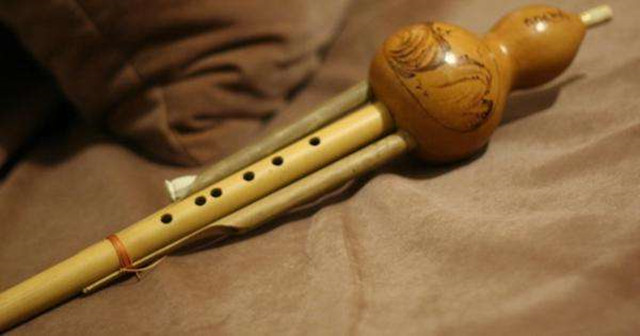Master the correct method and learn to circulate air in a week
Circulation ventilation (also known as circulatory breathing) is a way of playing wind music. As long as you follow the correct method, you should be able to learn and use it in a week, but if you want to better master this hulusi playing technique, then It takes a long time to practice and realize.
We use normal breathing (abdominal or thoracic-abdominal breathing) to blow cucurbits. After blowing in one breath, the sound should be cut off, because we need to inhale, and we cannot blow cucurbits. When blowing the cucurbit flute using the circulatory ventilation method, the sound can be continuous, because it can also be played while inhaling. The gas that came out of the mouth, but the gas stored in the mouth was squeezed out - the action of squeezing the cheeks and pushing the tongue from back to front squeezed out the gas in the mouth.

The sequential flow of the cyclic ventilation method: from 1 to 2 to 3 to 4, it is a whole process.
1 refers to "exhale normally through the mouth"
2 refers to "oral stored gas"
3 refers to "exhale through the mouth and inhale through the nose"
4 means "getting in"
The following are the specific practice steps for learning circulatory ventilation: do not practice on the cucurbit silk first, just practice with an empty mouth.
First, practice "exhale through the mouth while inhaling through the nose".
1. Enlarging the oral cavity can store a certain volume of gas, such as bulging cheeks. However, it is not required to be overly puffed up here, just puff up the cheeks appropriately. The oral cavity should be enlarged both horizontally and vertically. The lateral expansion of the oral cavity can be achieved by the method of drumming; the vertical expansion of the oral cavity can be realized by the method of making a "vomit" sound or "I" sound (but not sound), that is, the oral chin is moved downward.
2. Stop exhaling normally, and exhale by squeezing the cheeks inward, actually squeezing the air out of the mouth. This action can be practiced alone.
3. Practice breathing quickly through the nose into the abdomen (the abdomen should expand outwards). This action can be practiced alone.
4. Practice "exhale through the cheeks and inhale through the nose at the same time". These two actions are performed at the same time, and I am not used to it at first, because one mind cannot be used for two purposes. But you get used to it after a few days of practice.

Summarize:
1. The completion time of nasal inhalation should be less than the completion time of squeezing and exhaling. If the time of squeezing and exhaling is 4 seconds, the nasal inhalation time is 1 to 2 seconds.
2. When starting to squeeze the gills inward, you can squeeze the gills without force, and then squeeze the gills with a little force after getting used to it.
3. Nasal inhalation should not be too fast or too slow. Try not to make an inhalation sound during nasal inhalation. A little sound is normal.
Second, practice "normal exhalation through the mouth to expand the oral air storage".
The mouth exhales normally (referring to the exhalation like blowing cucurbit silk), and then transitions to expanding the oral cavity air storage. During this process, the normal exhalation of the mouth has been maintained.
Third, after the above two steps are well practiced, the whole process of circulatory ventilation can be started.
On the whole, it is relatively simple, as long as you follow the steps to try and practice step by step, and after you gradually find the feeling, you can start preparing for the practice of empty mouth and cucurbit silk.
 渝公网安备 50010702504639号
渝公网安备 50010702504639号